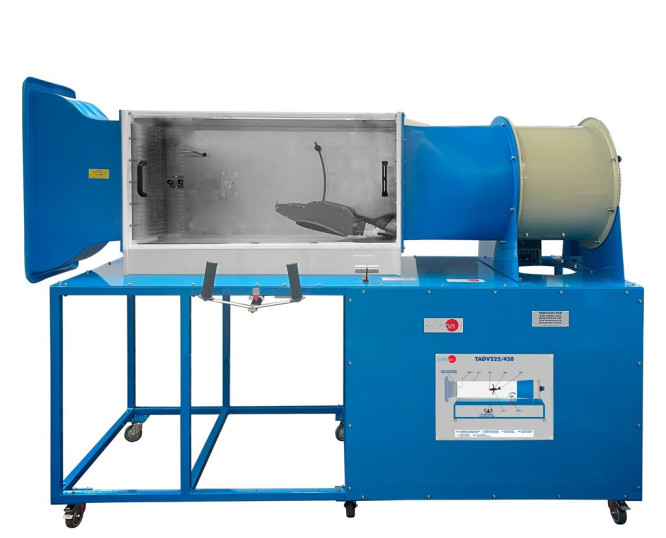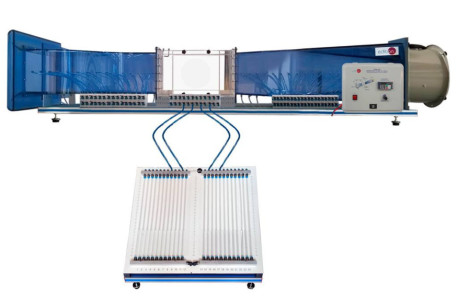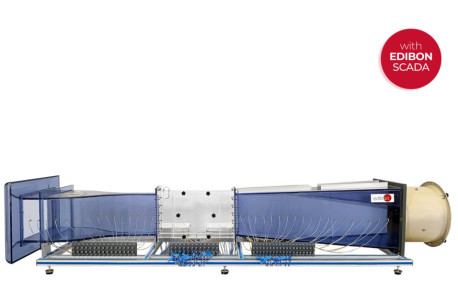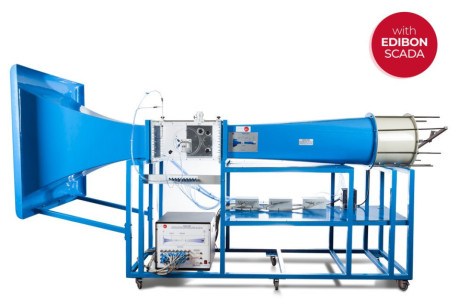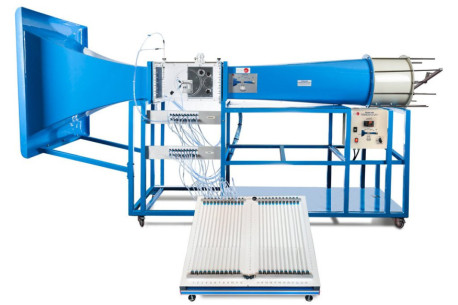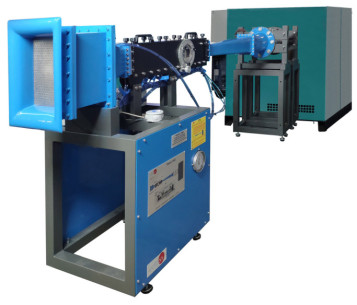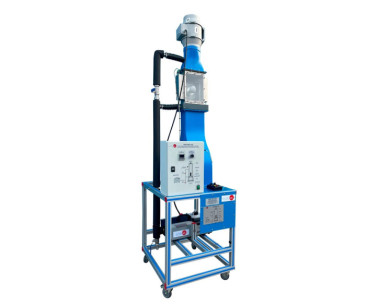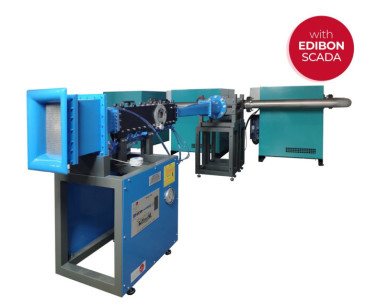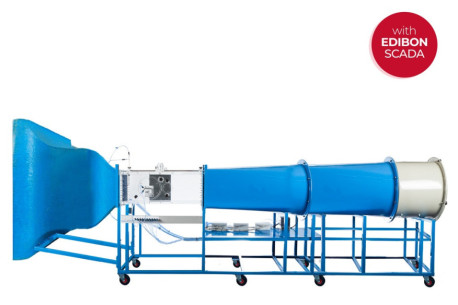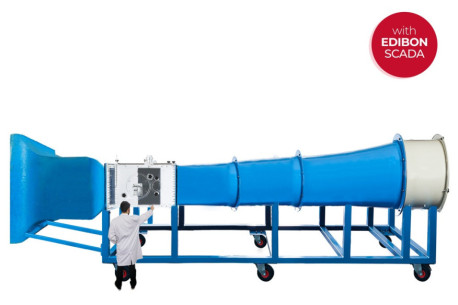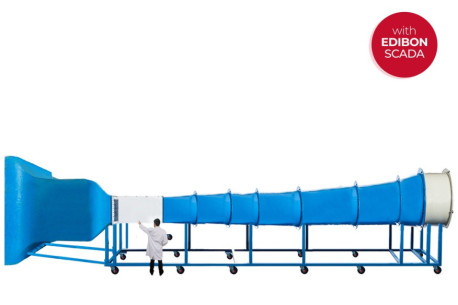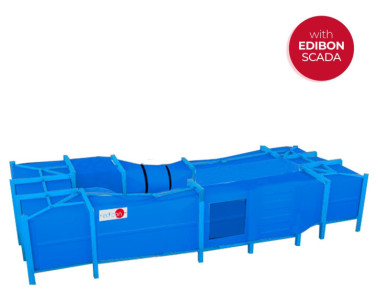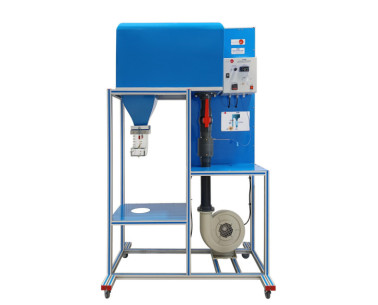La Soufflerie pour Démonstration en Vol, "TADV225/450", conçu par EDIBON, consiste en une soufflerie ouverte dans la section de travail de laquelle se trouve le modèle d'un avion à ailes fixes. L'avion est piloté par l'utilisateur à l'aide de commandes similaires à celles d'un avion léger pour une simulation réaliste des différentes étapes de vol. Les différents capteurs et les vastes possibilités de contrôle permettent d'étudier les différents états de vol, du décollage et de l'atterrissage au vol en palier, en passant par la croisière et le décrochage, ainsi que l'influence des gouvernes.
Dans la section de travail, est suspendu un modèle d'avion avec deux hélices à l'avant et deux ailes au profil aérodynamique commercial. Grâce à un système de contrôle manuel, il est possible de contrôler le tangage de l'avion et une manette des gaz similaire à celle trouvée dans un avion réel permet de contrôler la vitesse du vent dans la section de travail en simulant l'accélération ou le freinage de l'avion. Pour garantir un contrôle correct, la zone de travail est parfaitement éclairée et dispose d'une large fenêtre transparente pour visualiser correctement tout le processus. Les capteurs situés dans la section de travail permettent de connaître la pression et la vitesse de l'air, de plus, l'angle de tangage et l'attitude peuvent être mesurés par un capteur d'angle, l'altitude par un capteur de déplacement et la force de portance par une cellule de pesée. Ces valeurs sont affichées sur un écran visible par l'utilisateur lors de l'utilisation des commandes.
L'air est fourni par un ventilateur axial placé en aval de la section de travail. De plus, l’air passe par un redresseur de flux avant d’entrer dans le tunnel.
L'accélérateur régule la vitesse de rotation du ventilateur permettant d'accélérer et de réduire la vitesse du vent dans la section de travail.
Le contrôleur d'angle d'avion permet de faire varier l'angle d'inclinaison de l'avion en régulant la montée ou la descente de l'avion. Cet angle est affiché sur l'écran mentionné ci-dessus. Si cet angle dépasse une certaine limite, l’avion décrochera, réduisant considérablement la force de portance exercée sur l’avion. Un système de verrouillage sur le levier permet de fixer une certaine position.
Les ailes de l'avion suivent un profil aérodynamique de type NACA et comportent plusieurs bandes sur leur surface qui n'affectent pas le vol de l'avion mais permettent d'observer l'écoulement de l'air au-dessus de l'aile. Il est ainsi possible de visualiser le détachement de la couche limite et l'effet du décrochage.
Enfin, il est possible de faire varier la masse de l'avion grâce à un jeu de masses. De plus, il est possible de faire varier le centre de gravité de l'avion en plaçant les masses dans différentes positions.
La possibilité de faire varier le pas de l'avion et la mesure de la force de portance permet de retrouver la courbe de portance du profil utilisé et de retrouver la valeur de l'incidence pour laquelle le décrochage se produit.
Pour le Soufflerie pour Démonstration en Vol, "TADV225/450", il existe un certain nombre d'éléments supplémentaires recommandés (non inclus), notamment : Enregistreur Graphique à Deux Plumes, "TADV225/450-CR", pour démontrer le mouvement phugoïde et afficher de petites oscillations, et un Générateur de Fumée "TADV225/450-SGI", pour visualiser le flux d'air dans la zone d'influence de l'avion.
 Préférences sur les cookies
Préférences sur les cookies

